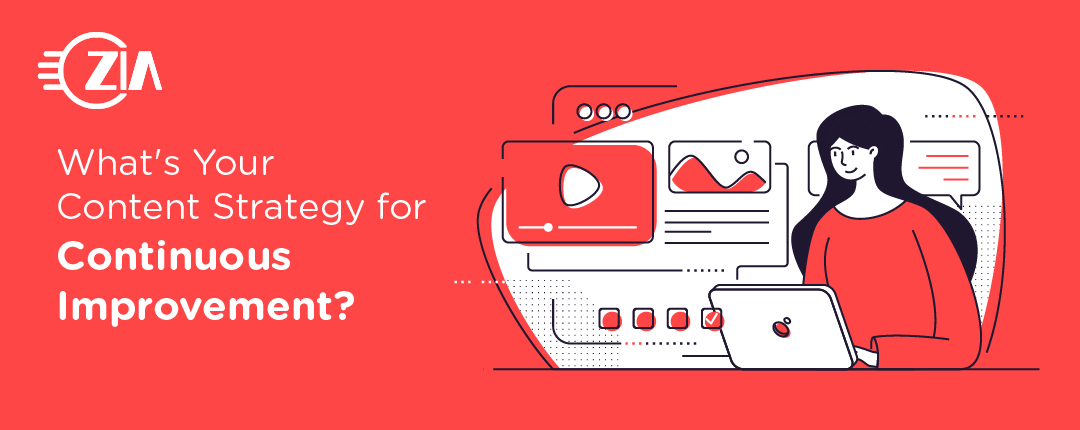Content management and data analysis play a vital role in continuous improvement. Anyone who employs a Lean Six Sigma strategy to improve quality is working to minimize variability in manufacturing. That means there’s a need for active document change control and effective data analysis.
The Role of Content Management and Active Document Change Control
First, let’s define the purposes of content management systems:
- Facilitate knowledge workers in documenting a process, and then offer content consumers a trusted, easily accessible content source.
- Ensure changes go through a defined review process—and there’s accountability and oversight for all change requests, whether approved or not.
- Provide an audit trail to measure the impact of changes made throughout a product life cycle.
When content management serves its purpose, it provides a strategic approach to affecting change.
When we talk with customers about the role content management plays in continuous improvement, we typically ask about their quality strategy. Content management can play a critical role in their quality strategy. It provides a means to store and structure unstructured information. This in turn provides actionable information to measure, analyze, and improve overall quality.
What does providing a means of storing and structuring unstructured information mean? Unstructured information comes in many forms and formats. For example, it could be a standard operating procedure (SOP), a maintenance log, a bill of materials, data streams, or image output from a drone or manufacturing process. Customers have used content management systems to store and catalog just about everything, from paper and digital formats. Structuring information usually involves assigning metadata to organize or summarize basic information. Metadata makes content easier to access, measure, analyze, and act on it.
Now, we’ll discuss two examples where storing and cataloging information in content management systems facilitated actions for continuous process improvement.
Example #1: A petrochemical company that continuously makes changes to their plant
In this example, a company leveraged content management for their drawing and process change control. They primarily stored SOPs and CAD drawings, including civil, electrical, mechanical, piping, and plant instrument diagrams.
By effectively using the metadata defined in the content management system, the plant personnel could quickly locate and organize documents based on their role. The content management system ensured that project engineers could work on documents for upcoming projects. They could also circulate the changes for approval. Then, they could effortlessly notify the operations and maintenance personnel which documents to refer to during the construction and project completion phases.
The content management access control and metadata ensured that everyone had the appropriate drawings and documentation during each stage of the project. The metadata also helped with drawing handovers between the owner-operators and the engineering, procurement, and construction firms.
As a bonus, the metadata fed into their ERP systems to help manage project status and closeout.
Example #2: Storing a utility company’s drone footage
In this instance, a company leveraged metadata to set work priorities, track expenses, and provide supplementary information for rate cases and regulatory compliance reporting. They reported to Federal Energy Regulatory Commission (FERC), Environmental Protection Agency (EPA), and Occupational Safety and Health Administration (OSHA).
Metadata from the company’s drone footage helped the company compare images to show where vegetation or animals potentially impacted a site over time. They could mark up information to inform maintenance personnel. For example, the GPS metadata helped them locate the site documentation and maintenance records. Also, it helped provide details to coordinate service requests. Lastly, the metadata helped the company organize, collect, and report actions taken to support EPA and OSHA compliance.
Content management plays a critical role in a Lean Six Sigma strategy. It provides a means for cataloging and storing content—and a disciplined approach for managing document changes. This in turn improves project turnaround time and maintains quality.
The Role of Data Analysis and Content
As stated previously, unstructured information comes in many forms and formats, but what about marrying unstructured data with structured data?
In many cases, structured data comes in the form of data streams. Examples of data streams include: printed output for billing statements, inventory and accounting reports, log files from machine data, and the Internet of Things.
If you’re looking to improve operational performance and strengthen internal controls, you need a strategy on how to ingest, parse, and archive this type of data. The volume for this type of data can be in the petabytes and could involve real-time streaming data that requires performance and scalability to manage.
When talking with customers about the role data analysis plays in continuous improvement, we typically ask about their Data Intelligence strategy. We then talk about how to integrate the information stored in databases, content repositories, collaborative content stores, and archiving systems so that people can interact with it through a single consolidated view.
How much trust do you put in these data sources? How can you gain more confidence in the data? We talk about using tools to continuously scan this information regardless of type, source, and volume to analyze and detect data discrepancies. The objective is to compare and validate unstructured data and content with corresponding information. This could be found in structured reports, invoices, customer statements, and other documents. In essence, this information ensures data integrity exists between systems and sources of information.
Many times, these strategy conversations lead to understanding the data origins and data lifecycles, which touches on governance and strategies around identifying and managing personally identifiable information (PII) and the right to be forgotten. We also unpack reducing technical debt by rationalizing systems and planning how to eliminate information that is considered redundant, obsolete, or trivial (ROT).
Want to learn more?
If you’re interested in developing your organization’s content and data strategy for continuous improvement, check out these resources:
- Enroll in a free, upcoming Digital Transformation webinar, or browse our archives
- Meet us at an upcoming event
- Drop us a line today—we’re happy to answer your questions

